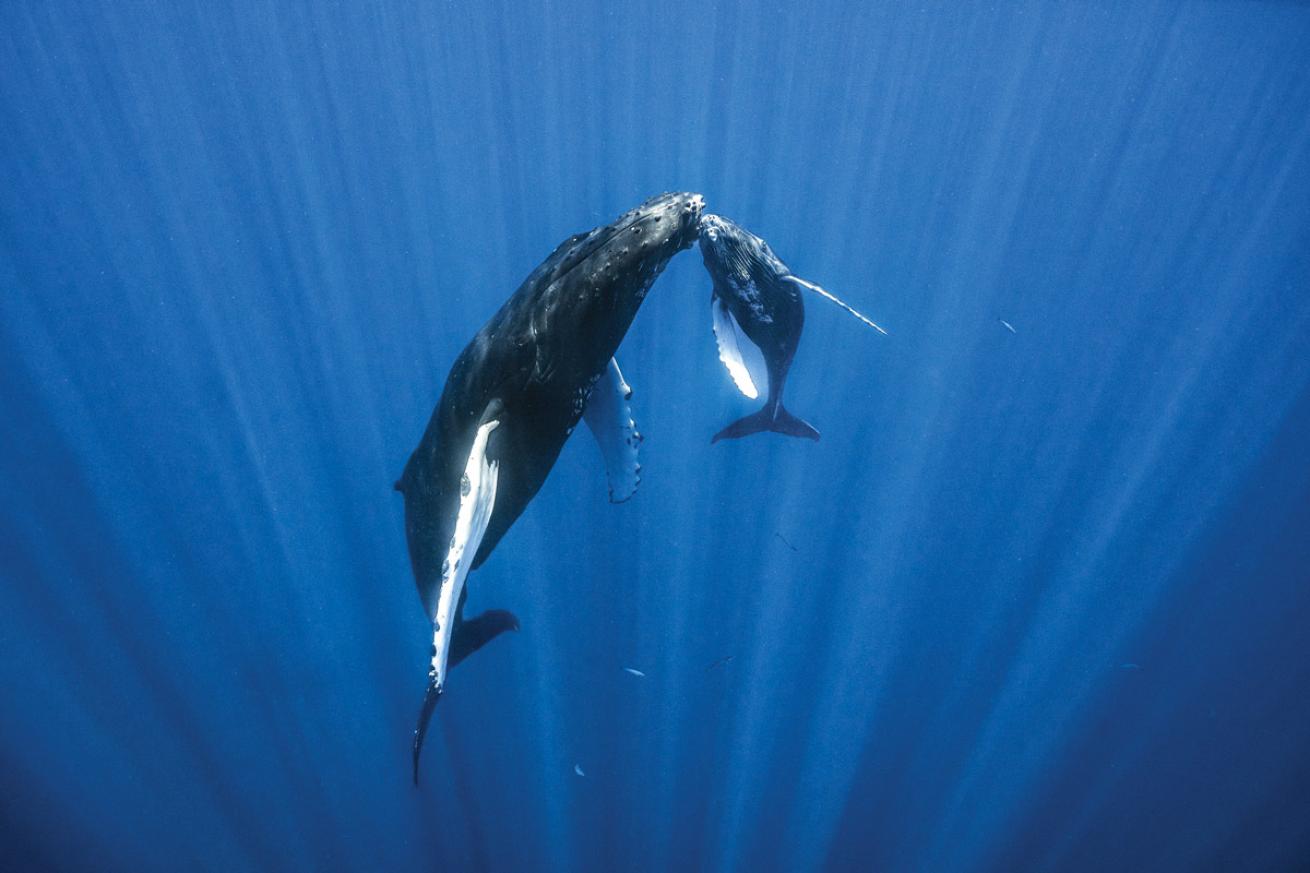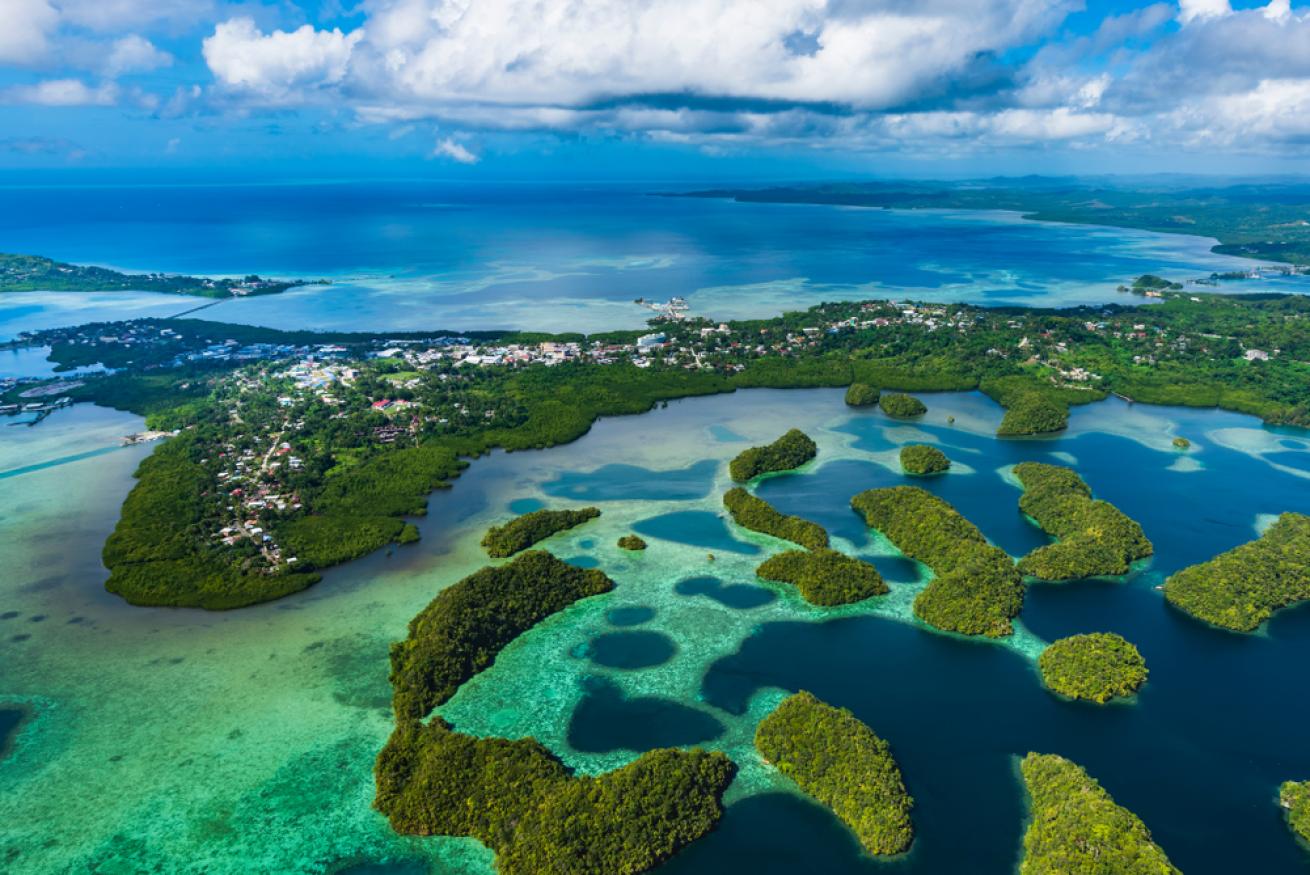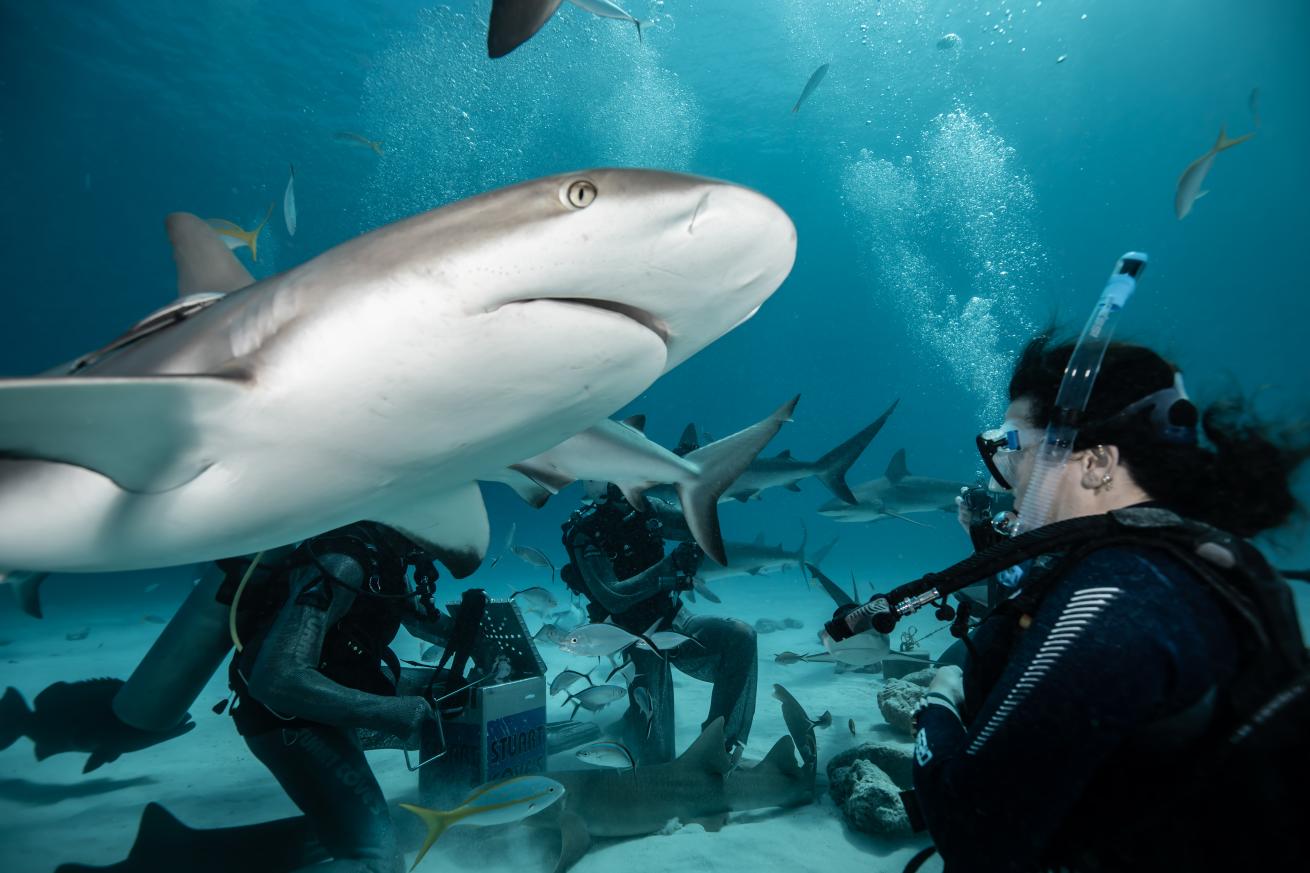Dive Hotspots: Hawaii, Palau and Bahamas

MICHELLE DREVLOWA humpback whale mother and calf interact near Maui, Hawaii.
Planning a trip to one of these dive hotspots? Here’s what you need to know. Featuring insight from locals, tips for timing seasonal experiences, and the scoop on popular dive sites, as well as some lesser-known dives you’ll want on your radar too.
Hawaii
Under the Radar
Blackwater night dives with Kona Honu Divers fly under the radar compared to the wildly popular night dives with mantas that have divers and snorkelers streaming onto the Big Island. For advanced divers, being suspended from a 40-foot tether above 4,000 feet of ocean while watching siphonophores, clear larval fish and pelagic animals drift by makes for a major marine rush.
The Classic Dive
Koloa Landing, on the southern coast of Kauai, is the island’s classic shore dive— and it only drops to about 40 feet, leaving you lots of bottom time to explore.
“Koloa Landing has it all. During the day, you can see dozens of turtles resting among the reef and morays with mouths open wide for the wrasse to clean, and hear the crunching of fish feasting on the reef,” says Sarah Stafford, of Fathom Five Divers. “On night dives, octos glide along the sandy bottom, eels are lurking around the rocky bends to hunt their prey and there are strange-looking sea cucumbers.”
Dive Report
“We’ve been seeing quite the abundance of marine life this summer,” says Rob Porter, of Kona Honu Divers. “On a recent dive at Big Arches and Kaloko Ponds, we saw a tiger shark, great barracuda, eagle ray, hawksbill turtle, three kinds of scorpionfish and two octopuses mating.” Massive baitballs, dolphins, tiger sharks, frogfi sh and tons of nudibranchs have also been spotted on almost every recent dive around Kona, Porter says.
Related Reading: Expert Alex Mustard Shares His Secrets on How to Photograph Dolphins in the Wild
Plan a Trip
Humpbacks arrive in Hawaii’s waters from November through March.
And late spring through early fall brings the best conditions for diving Hawaii’s Forbidden Island, Ni’ihau, which Fathom Five Divers and other shops visit during day trips by boat from Kauai.
Divers delight at the chance to spot endangered monk seals in Ni’ihau’s waters. “Spinner dolphins, pilot whales, and even humpbacks are often seen while crossing the Kaulakahi Channel, depending on the time of the season,” says Stafford. “The sandbar sharks, lovingly known as the sandbar sisters, will likely make an appearance to say hello to divers. Occasionally a curious monk seal or a gray reef shark will investigate, or some spotted eagle rays will glide by.”
Second-Time Visitor
Divers understandably focus on Hawaii’s underwater views, but the islands are just as mind-blowing topside too, of course.
On the Big Island, Byron Kay of Kona Honu Divers points to vanilla, chocolate and honey farm tours as tasty ways to keep busy. Visitors can also hike to craters and—for intrepid hikers—the summit of the inactive volcano Mauna Kea, which reaches a height of 13,803 feet, the highest point in the Hawaiian islands.
Palau

Shutterstock.com/NorimotoFind healthy marine life and stunning views in Palau
Under the Radar
Marc Bauman, of Sam’s Tours Palau, points to Shark City—a deep-plateau dive site near Ulong Island—as a worthy spot that doesn’t seem to get tapped as often as Palau’s more famous dive sites. “It has a bit stronger currents that bring in a lot of the big stuff, like eagle rays, barracuda and gray reef sharks,” he says. “There’s a really killer lettuce coral bed out there, and tons of snapper too.”
The Classic Dive
It’s hard to pick just one classic dive in a place as thick with life and underwater geology as Palau, says Tova Harel Bornovski, of Fish ‘n Fins and Ocean Hunter Palau liveaboard. At Blue Corner, she says, you can watch a parade of sharks gliding in front of you among huge schools of fish. “And Ulong Channel is where you drift through the channel among sharks, groupers and turtles and pass by huge cabbage patch corals,” Harel Bornovski says.
Dive Report
“It’s back to old-school Palau right now,” says Bauman. “It’s the best I’ve seen it here since the ’90s. There are not so many boats at popular sites like Blue Corner. The island really needs tourism, but the marine life has all come back because there was nobody on the island for two years.”
Related Reading: Cabo’s Other Wild Side: Swimming with Blue and Mako Sharks
Plan a Trip
There’s something fascinating to see underwater on a monthly basis in Palau, says Harel Bornovski. “Bumphead parrotfish spawn by the thousands every month before the new moon, and red snappers spawn in the thousands every month before the full moon,” she says. More pelagics are brought in by cooler water temperatures that wash Palau from December to February. And Moorish idols that spawn in February attract sharks by the hundreds to feed on them.
Bauman says to mark your calendar for the two weeks in March and April when sea bream spawn, between the full moon and the new moon.
Second-Time Visitor
Just north of Koror, Babeldaob is Palau’s largest island. Check out topside sites such as the Ngardmau Waterfalls and the Japan-Palau Friendship Bridge.
Bahamas
Under the Radar
Don’t be fooled by the shallow depths (20 to 25 feet) at the beginner dive site Southwest Reef, about 6 miles off the coast of New Providence Island, says Travis Cove, of Stuart Cove’s Dive Bahamas. “It features a lush reef system with magnificent colors as well as large schools of different species of fish,” he says.

Kristin PaterakisBe ready for an up-close experience if you book a shark dive with Stuart Cove's
The Classic Dive
The best dive in Nassau, and a classic throughout the islands of the Bahamas, awaits at Stuart Cove’s Dive Bahamas during the two-tank Shark Adventure. “Nowhere else in the world can you dive with sharks in such close proximity and large numbers as with us,” Travis Cove says. “We put on the show of a lifetime for divers.”
Dive Report
“The diving in Grand Bahama right now is great. The water is about 86 degrees, so you can dive without a wetsuit,” says Ceaser Sounders, of Reef Oasis Dive Club. “We’re always seeing our native Caribbean reef sharks at our Lucayan reef dive sites. And we’re also seeing many more loggerhead turtles in the area, mostly at our house reef, Ben’s Blue Hole.”
Related Reading: Going Green: How to Improve Your Turtle Photography
Plan a Trip
September and October, low season in the Abacos, coincides with large schools of Nassau grouper congregating here at the very beginning of their mating season, says Kyle Stevens, of Brendal’s Dive Center. “Nassau grouper are critically endangered, so being able to still find large Nassau grouper congregations is a rare and very special occurrence to witness.”
Second-Time Visitor
All the sharks—tigers, bulls, Caribbean reef and more—can give you tunnel vision, but the Bahamas has amazing shipwrecks too. Just south of Green Turtle Cay, Abaco, the historic wreck of the USS San Jacinto steamboat wows in waters that bottom out at the 50-foot mark. “The boilers and stern of the boat are still intact, and the size of the boiler and propellers is unbelievable,” Stevens says.










